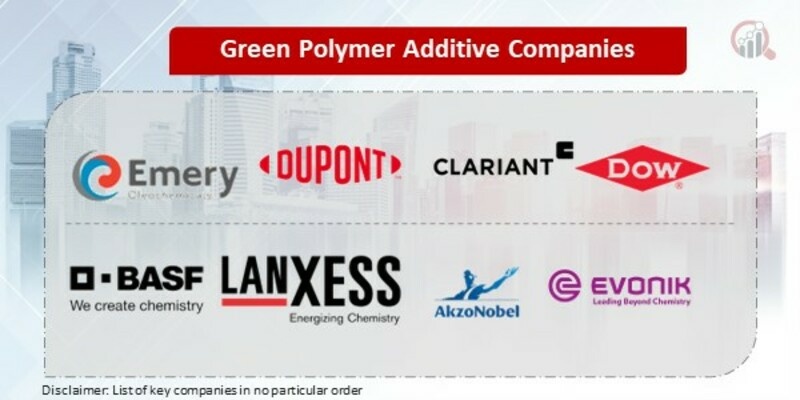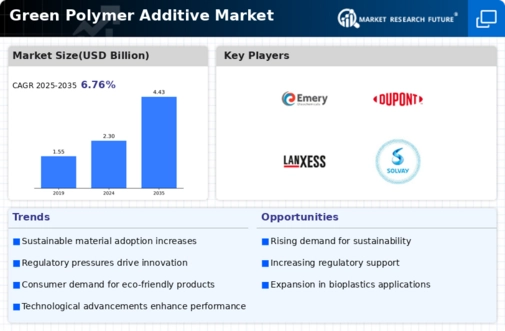Top Industry Leaders in the Green Polymer Additive Market

Beneath the seemingly innocuous surface of everyday plastics lies a complex world in dire need of a sustainable tune-up. Enter the green polymer additive market, a blossoming melody of eco-friendly solutions poised to harmonize environmental responsibility with the functional versatility of polymers. But beneath this harmonious melody lies a complex musical score, where players compete for market share, employing distinct strategies and navigating dynamic trends.
Strategies Amplifying Sustainability:
- Product Innovation: Leading players like Lanxess, Evonik, and BASF are constantly pushing the boundaries, developing new bio-based, biodegradable, and compostable additives to minimize plastic waste and reliance on fossil fuels.
- Circular Economy Focus: Companies are investing in technologies like chemical recycling and mechanical upcycling to reclaim polymers and regenerate them into new additives, closing the loop on the plastic life cycle.
- Regulatory Compliance: Proactive adoption of stringent regulations like the EU Single-Use Plastics Directive is driving demand for green alternatives, creating new market opportunities.
- Vertical Integration: Some players are pursuing vertical integration, acquiring raw material suppliers or expanding into downstream production of sustainable masterbatches or polymer composites.
- Partnerships and Collaborations: Strategic partnerships and collaborations with research institutions, startups, and NGOs are fostering innovation and accelerating the development of next-generation green additives.
Factors Dictating Market Share:
- Performance and Cost Competitiveness: Green additives must not only be sustainable but also deliver comparable performance and cost-effectiveness to conventional additives to gain wider adoption.
- Brand Reputation and Customer Relationships: Established brands with strong reputations and long-standing customer relationships in the polymer industry often enjoy headwinds in adopting green solutions.
- Product Portfolio Diversity: A diverse portfolio catering to various polymer types and applications like biodegradability, flame retardancy, and UV resistance allows companies to attract a wider customer base.
- Regulatory Landscape: Navigating the evolving regulatory landscape, particularly in Europe and North America, is crucial for market access and customer trust.
- Technical Expertise and Innovation: Companies with strong technical expertise and investment in research and development are better positioned to identify and capitalize on emerging opportunities in the green additives space.
Key Palyers:
- Emery Oleochemicals (US)
- DuPont De Nemours, Inc. (US)
- Clariant AG (Switzerland)
- Dow (US), BASF SE (Germany)
- Lanxess (Germany)
- AkzoNobel NV (Netherlands)
- Evonik Industries AG (Germany)
- PolyOne Corporation (US)
- Solvay (Belgium)
- GC Innovation America (US)
- Arkema Inc (France)
Recent Developments:
- September 2023: Several green polymer additive producers announced price increases due to rising raw material costs and supply chain disruptions.
- October 2023: The American Chemical Society hosted its annual conference, focusing on advancements in green polymer additive technology, sustainability initiatives, and market trends in the plastics industry.
- November 2023: A global study highlighted the potential of functionalized green polymer additives with enhanced properties like self-healing or anti-microbial functionality, opening up new avenues for product design and functionality.
- December 2023: The Chinese government announced plans to invest in the development of advanced green polymer additive production technologies, aiming to strengthen domestic production and compete with global players.

